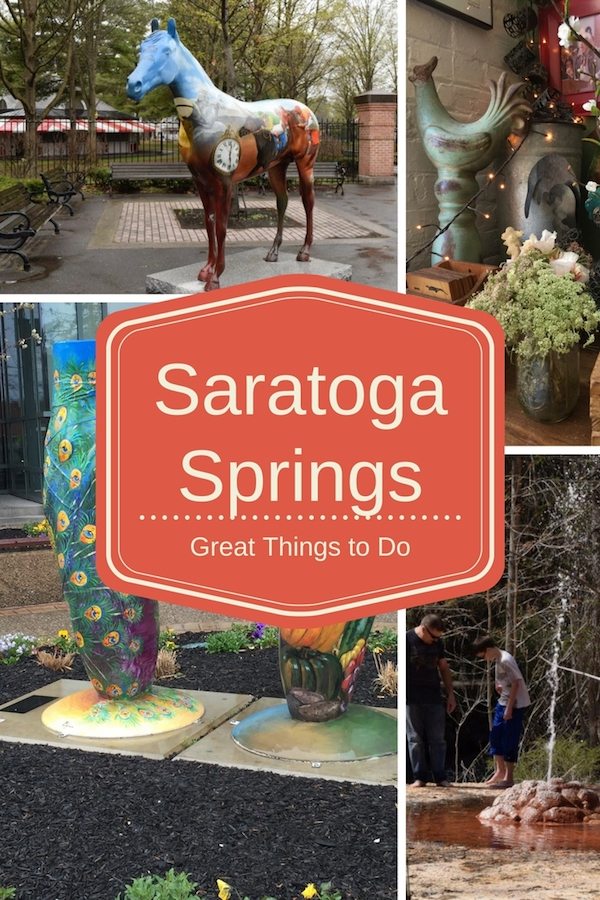Saratoga Springs: Why You Should Visit Off-Season
The secret for a great weekend getaway to this historic upstate New York town? Hit it before the season begins.
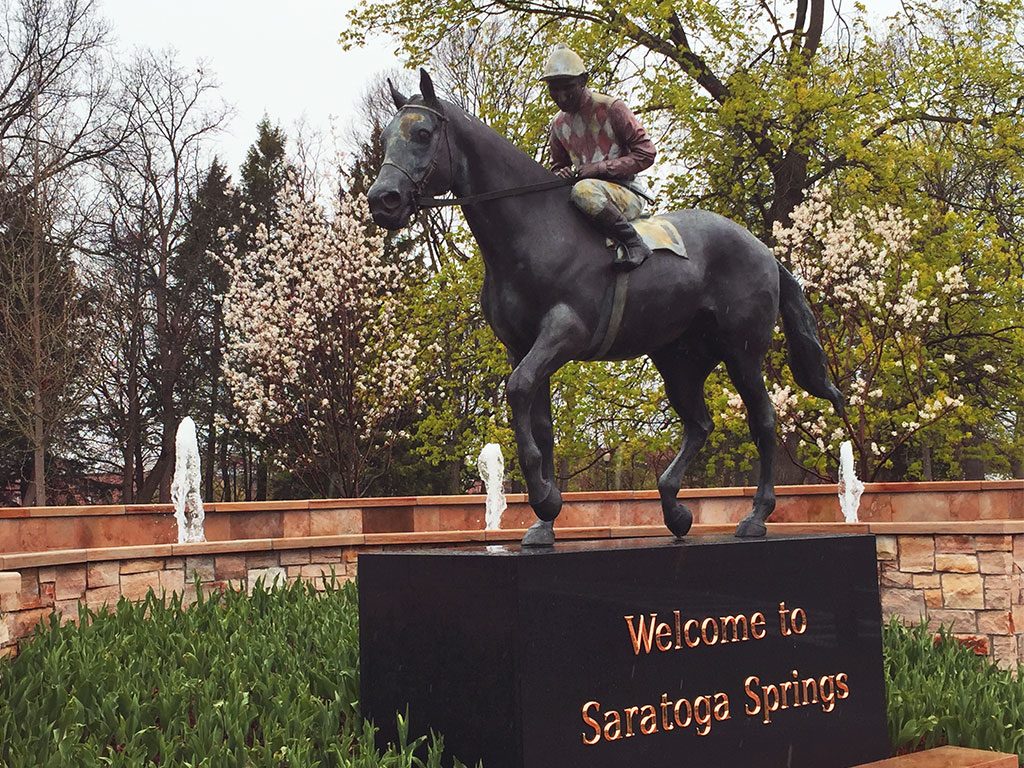
Saratoga Springs is a great travel destination and an easy getaway from NYC. The problem? Everyone knows it. When the annual thoroughbred racing season opens in July, the village is overrun with bonneted women and men with cigars. You can plan on two things: losing more than you win at the track and spending a good part of your summer weekend sitting in traffic.
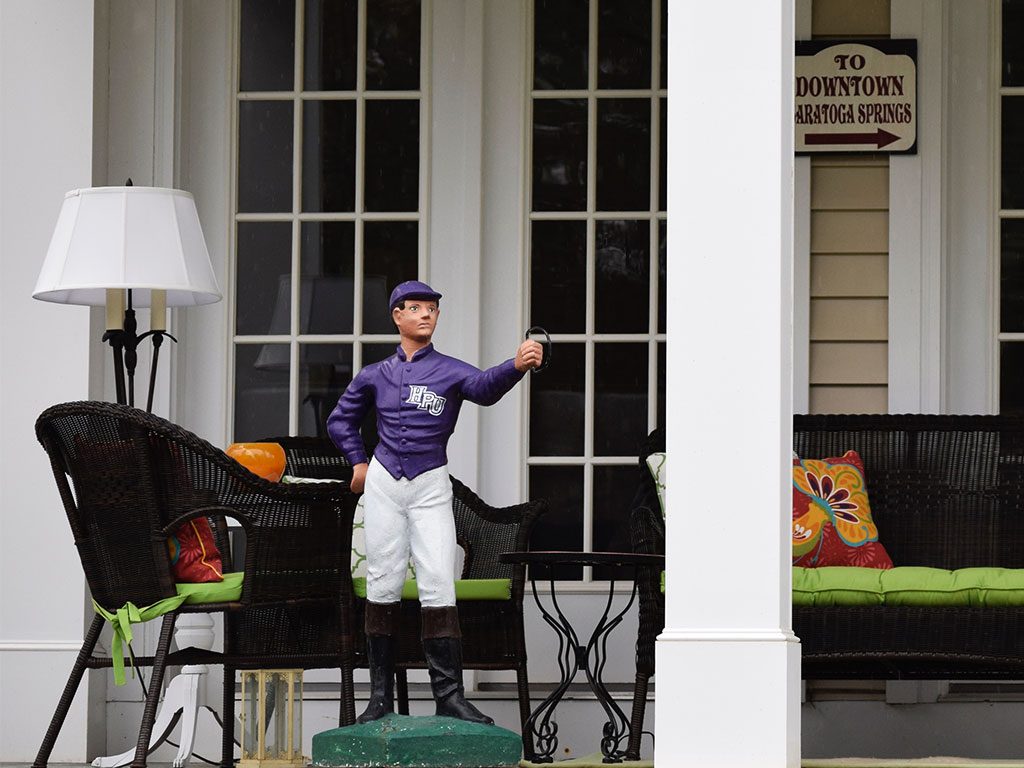
Saratoga Springs shakes off its winter coat on April 1 as thoroughbreds begin to return to the historic racetrack for training and the horsey set migrates north from their Florida winter homes. The racing season begins on July 22 this year, but the town is all horses all year round. Every other home is guarded by a lawn jockey and the restaurants are decorated with racing memorabilia.
“Health, History and Horses”
The town’s motto salutes the three things that truly identify Saratoga as a destination worth visiting. At the Saratoga National Historic Park, visitors can learn about the Battle of Saratoga, a crucial Revolutionary War campaign. After the war, entrepreneurs, most notably Gideon Putnam, began building inns and developing infrastructure to tap the town’s naturally carbonated water. Saratoga’s 18 springs are the result of fissures in the earth’s shale that release mineral water; each is believed to have different curative powers. Wealthy New Yorkers flocked to the town to “take the waters” and enjoy magnificent upstate summer weather. Supplemental leisure activities developed including casinos, and, in 1863, the Saratoga Racetrack opened.
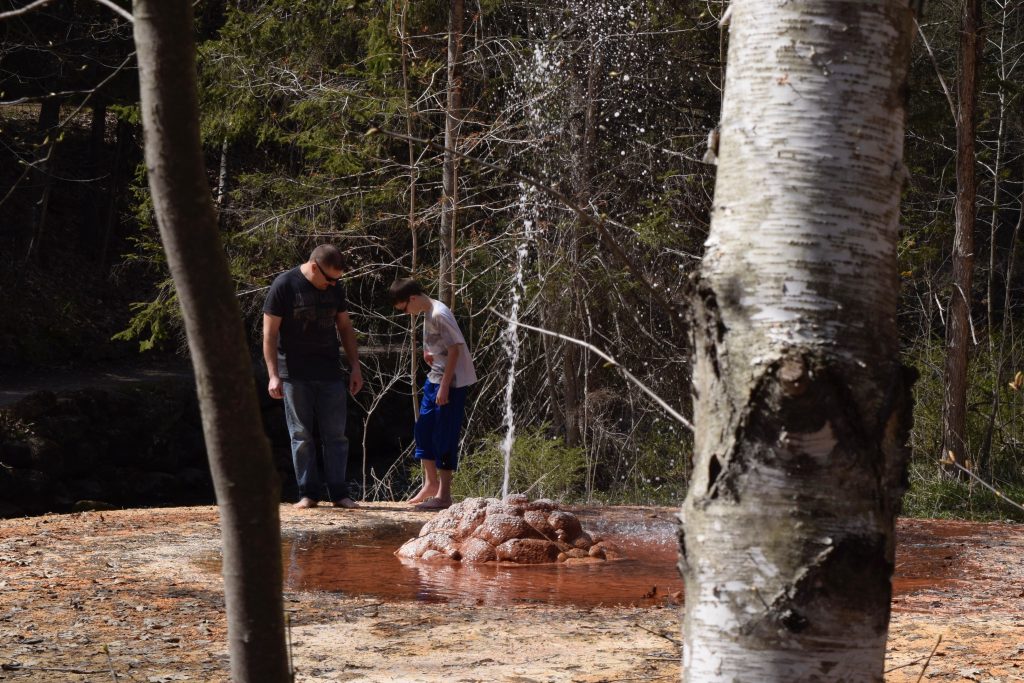
Built for Speed
The town has a number of museums to explore including the New York State Military Museum, the Saratoga Automobile Museum, and the National Museum of Dance. I had time for one, so I chose to visit the National Museum of Racing and Hall of Fame. It’s located across from the track on Union Avenue. Highlights include the skeleton of a racehorse with a detailed explanation of the unique anatomy that propels these massive, 1200-pound animals to speeds up to 55 miles per hour. There’s a colorful display of jockey silks and a detailed description of the breeding process.
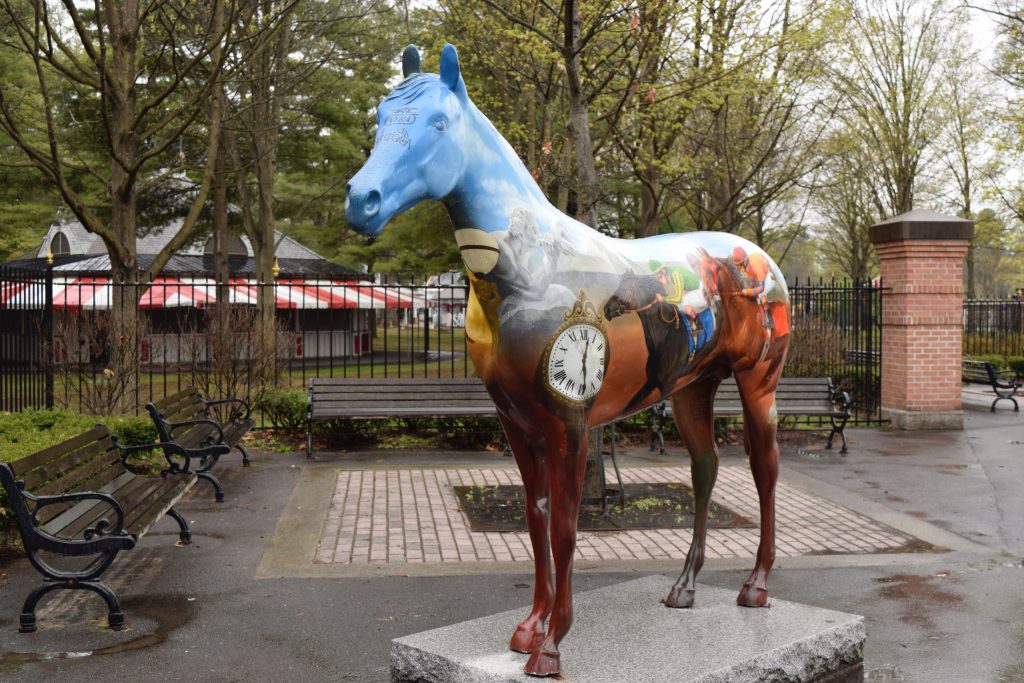
Spoiler alert: equine lovemaking does not involve candles and Marvin Gaye.
Your best chance to catch a glimpse of the horses is to stalk the fence line on East and Union Avenues between 6 and 10 a.m.. If there’s a guard on duty, a polite “Please, may I?” could get you into the viewing stand to watch the morning workouts.
Both the museum and track are within walking distance of the village’s downtown and I encourage you to hoof it. From Broadway, stroll through Congress Park, developed around the first tapped spring; it feels very European with statues, fountains, and a charming little duck pond. And take time to wander up and down the park’s neighboring streets to gawk at the historic Victorian and Greek Revival homes featuring classic colonnades, porticoes, and picturesque front porches.
Where to Put on Your Feedbag – Great Restaurants in Saratoga Springs
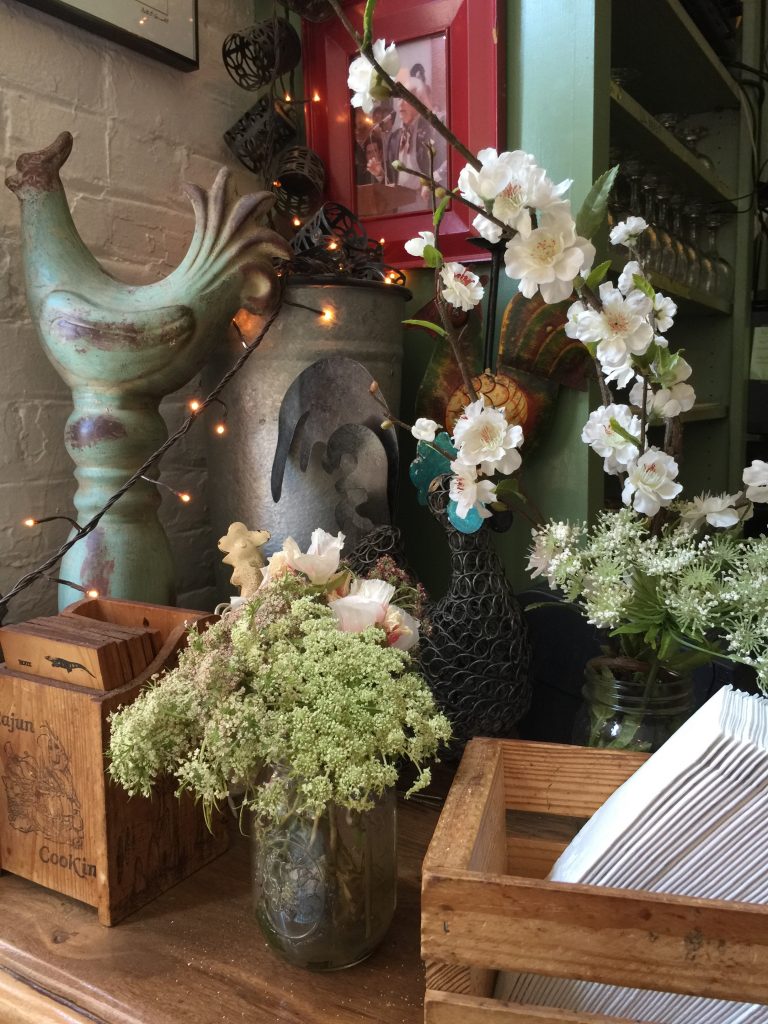
Once you’ve worked up an appetite, it’s time to feed the beast. Duck into Hattie’s, a charming, checker-clothed cafe that’s served fried chicken prepared with the same recipe since 1938. Another local favorite is Sperry’s, if you’re in the mood for a classic flat iron steak and frites. Lighter fare is available at Scallions; try the grilled chicken and wild rice wrap with fresh squeezed lemonade. Another fun spot to hit is Druther’s, an award-winning microbrewery with a lively outdoor beer garden. Sweet treats are available at Mrs. London’s, a European-style boulangerie, and chocolate lovers should not pass up the chocolate-covered s’mores at Kilwin’s.
Exploring the Great Outdoors
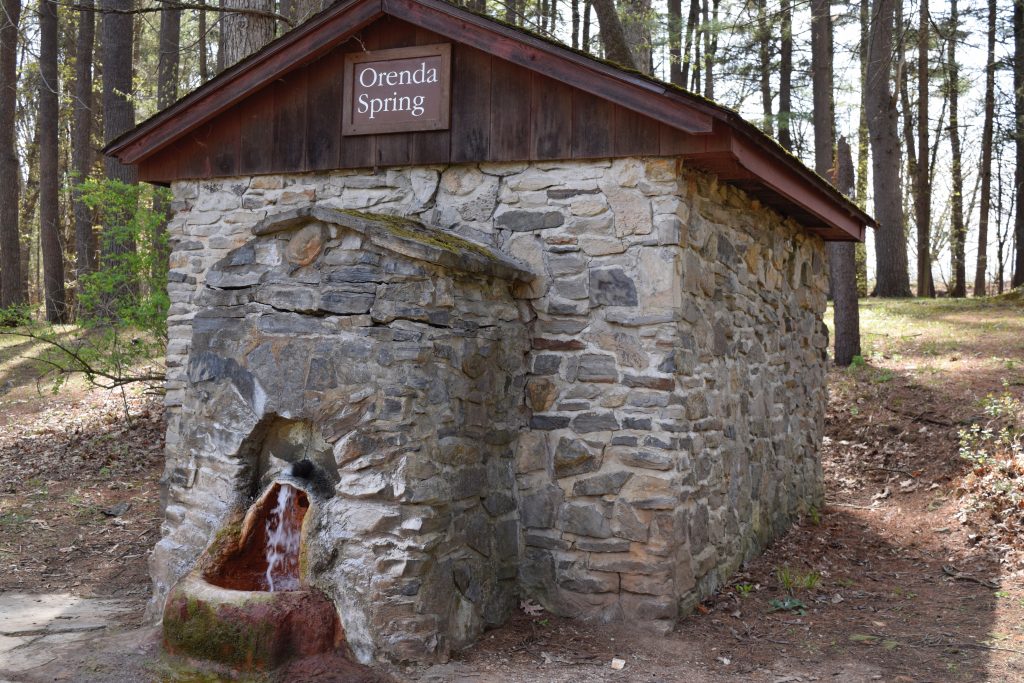
After stuffing my face, I needed about 50,000 steps to counteract the calories. Fortunately, there were plenty of trails to wander in the 2300-acre Saratoga Spa State Park. I picked up a trail map in the parks office and set off to see the springs in action. Several of them are located along the Geyser Creek Trail. They’re tapped so you can sample the taste which is definitely not what you’re used to drinking out of your home faucet. Informational signs provide details about the area’s unique geology and the role of the waters in Native Americans’ traditional medicine practices.
Besides the trails, the park has two golf courses, the Gideon Putnam Resort, and the Saratoga Performing Arts Center, which hosts live music and dance events throughout the summer.
The Gideon Putnam operates the Roosevelt Baths and Spa, originally opened in 1935 as a public bathhouse. My back was a bit creaky so I decided to see if a 40-minute mineral soak would miraculously cure me. It’s located inside one of the classic, low-slung brick buildings in the park. Upon entering, my immediate reaction was that the word “spa” should be removed from the name; the building is decidedly institutional. The interior hallways don’t make you feel like you’ve reserved a spot in an oasis – you’ll actually think you’ve been committed to an asylum.
The attendants are not soothing aestheticians; mine had the demeanor of Nurse Ratched from “One Flew Over the Cuckoo’s Nest”. When she opened the door to the treatment room, I considered making a break for it. The decor? Think Dexter’s kill room. A large tub was filled with rust-colored water and the plumbing fixtures were grimy with years of mineral deposits. Nurse Ratched warned me that the tub was 3 inches deeper than the floor and mentioned something about using the footstool to secure myself in the water. The water temperature should be perfect, she said, but she told me to feel free to adjust it using the hot, mineral tap, and the regular, coldwater line. She told me she’d be back in 40 minutes, but her look implied she might be back sooner…with a machete.
I turned out the hospital room lighting and was grateful that the flameless LED candle made the room less ominous. Forgetting about the depth, I stumbled into the tub. She was right; the temperature was perfect, but the water was spectacularly buoyant – I nearly bounced right out. I grabbed the stool and attempted to figure out how to position it. Under my legs didn’t work; neither did placing it beneath my bobbing butt. Finally I realized I needed to park it on the vertical end of the tub so I could brace my legs against it. I leaned back and let the waters do their thing until there was a soft knock on the door and I was given a hot towel. Cured? Nah. But it was definitely a unique experience and a must-do if you visit ‘Toga.
Where to Stay
Forget the Gideon Putnam. The 120-room hotel is historic, but its better days are in the past. The place looks tired and sad and so does the staff. For example, I left my bag behind the front desk and when I went to retrieve it, the bellman escorted me behind the counter, pointed at it, and walked away. It’s also about 3 miles from town and taxi rides are expensive; they averaged $8, one-way, in the off-season.
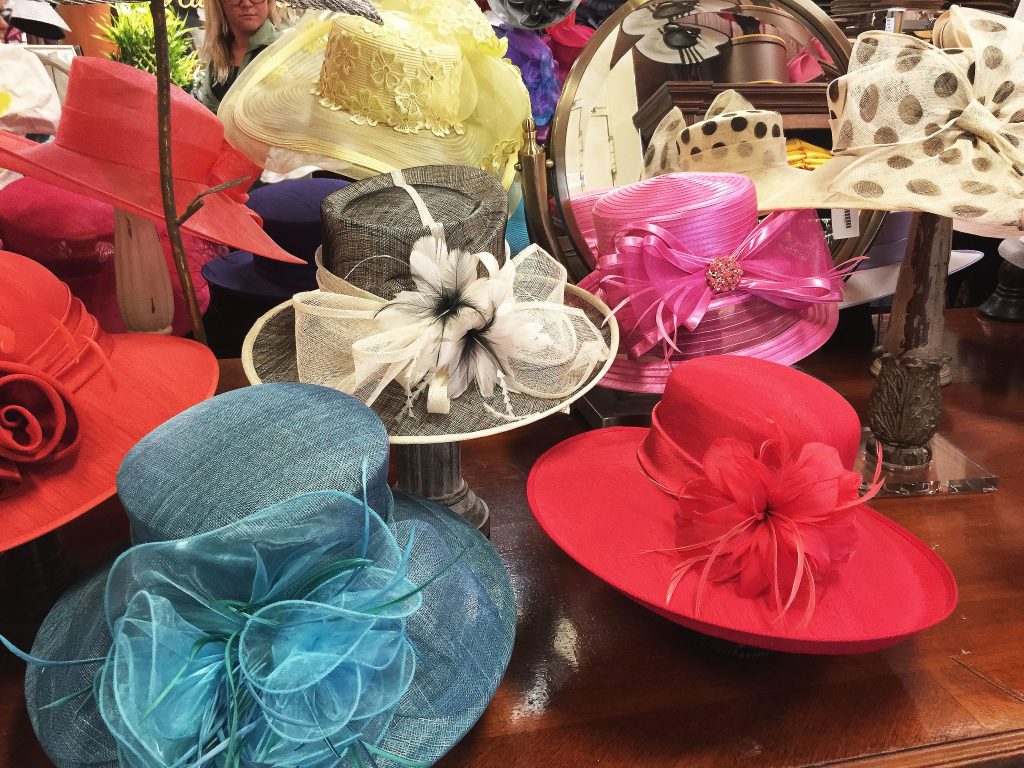
You’ll be much happier at the downtown Saratoga Arms. It’s a gem of a boutique inn with 31 beautiful, large rooms. Included in the rate is a well-considered breakfast buffet, supplemented by one sweet and one savory hot entrée. There’s a very nicely stocked complimentary guest pantry with chocolate bars, fruit, coffee, tea, and Saratoga water available 24/7. The massive front porch is perfect for an evening glass of wine and people watching. My off-season room rate was $149; in season, there’s a 3-night minimum and the rate is over $500!

